This post started life as a Twitter thread, but has been expanded and improved. Follow me on Twitter to get the scoop in advance next time! (Note: embedded tweet might not load due to the latest shenangians over there ).
I found this amazing book yesterday - The Marine Chronometer by Rupert Gould. Even if you're not a fan of watch mechanisms, it's an absolute treat. 🧵 (1/?) #chronometer #johnharrison #timepieces #watches #longitude pic.twitter.com/V0GbWb3Dut
— Mark Hood (@markhood) July 3, 2023
I found this amazing book on Sunday - The Marine Chronometer by Rupert Gould. Even if you’re not a fan of watch mechanisms, it’s an absolute treat.
A small side note: I found it at Aardvark Books , a wonderful second-hand and antiquarian bookshop not far from me. They are exactly the kind of rambling, low-ceilinged bookshop you’re picturing, too. Not to mention they have a lovely cafe and regular flea markets.
This particular copy cost me 50p. It is a 1978 reprint of the second edition from 1960… Thrilling, no? This one, in fact, without the dustcover: https://fae.watch/z/0900470178
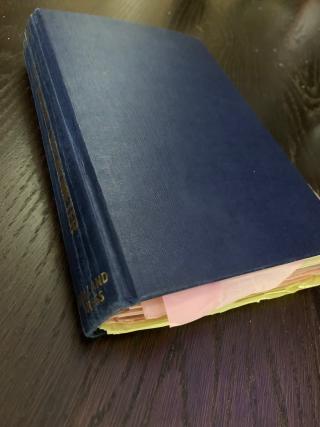
Oh, OK. It’s not that exciting. Except… what are all those notes for? Those papers sticking out of the edges are what caught my eye. Someone’s made a lot of annotations, and that has to be worth checking out.
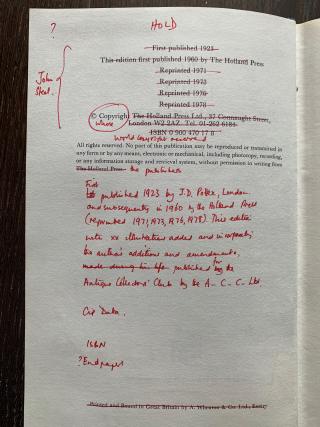
This is a truly unique copy, annotated and adjusted in readiness for the next edition, due in 1982/83! Though since Gould died in 1948, and this book was printed thirty years later, they can’t be his notes. Can they?
Well take a look at this note from the chapter on John Harrison:
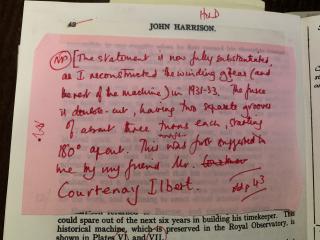
(V) The statement is now fully substantiated as I reconstructed the winding gear (and the rest of the machine) in 1931-33. The fusee is double-cut having two separate grooves of about three turns each.
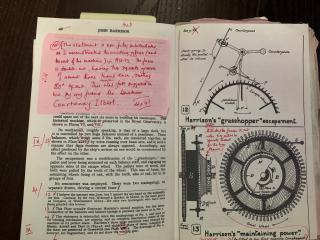
In any case, I have a hand-annotated, fully marked-up edition of this author’s manuscript - including reports of working on Harrison’s H1 in 1931! It certainly reads as if it was a first-person account - and Gould was employed to repair the Harrison Chronometer at that time. Maybe he made some notes earlier on, and now these have been transcribed onto the latest edition to prepare for the new one?
As another aside, H1 is a truly remarkable device which (along with its descendants) went on to save thousands of lives. You can read all about it in the book Longitude, by Dava Sobel
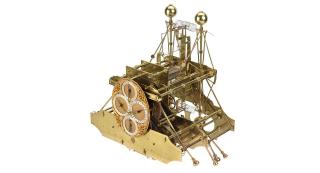
And the book? It’s now available in an illustrated edition from 2013 , “considered by many to be the finest horological text of the 20th century.” This edition also includes the author’s notes, “prepared for a planned second edition”… but I wonder if I have stumbled across the originals?
If anyone can shed any light on what I’ve found, please do let me know!
